Copyright 2011
Arriving early morning on a beautiful Spring day, cruising at a low altitude over the countryside, our flight circled the city, affording us a marvelous view of the patchwork early Spring fields, greens and browns.
Some of the rectangles were much longer than wide and the farmed land was itself very flat. Yet I could see contours in the land, wrinkles for runoff, as well as wooded hills here and there and a few small clusters of windmills for electricity generation. Small settlements (of not more than one or two hundred dwellings) lay scattered across the predominantly agricultural land, often nestled along one of the “wrinkles” in the land. Occasionally a highway or road would neatly bisect the land. The sky was clear blue. The land looked rich, the countryside prosperous.
We landed at the Vienna International Airport (VIE) and took the S-Bahn into town, exiting the system at the Stadt Park Station, just across the street from our hotel, the Intercontinental. Despite the early hour (10am), they found us a room with a view of the park where we could drop our bags before setting off to explore the city center (the Innere Stadt).
The Innere Stadt lies within the Ringstrasse, a encircling roadway which lies where city walls once stood. Our hotel was two blocks outside the ring. We headed to city center and St. Stephen’s Cathedral (St. Stephansdom), first completed in 1160 C.E., with subsequent major additions and renovations occurring through 1511. It’s a Gothic masterpiece and conspicuous landmark.

St. Stephen’s Dom
(Cathedral)
detail

St. Stephen’s Dom
and St. Stephen’s Platz
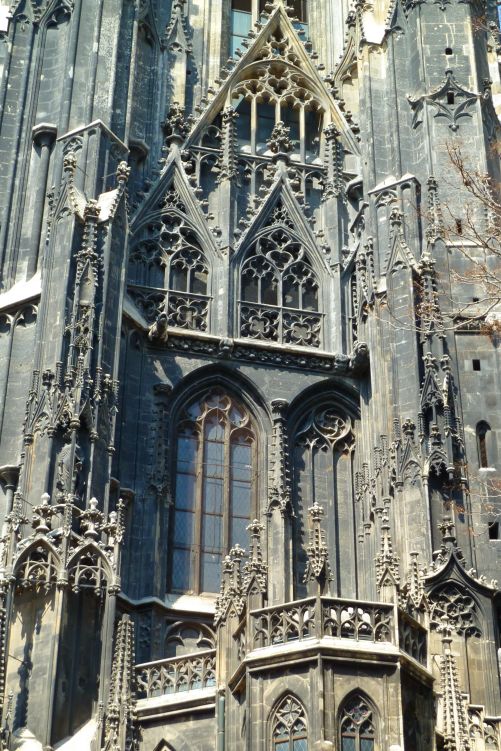
St. Stephen’s (detail)
From the cathedral and St. Stephan’s Platz we walked a short 100 yards to The Graben (Der Graben), a broad street of richly maintained historic buildings:
The Graben traces its origin back to the old Roman encampment of Vindobona. The south-western wall of the settlement extended along the length of the present-day Graben and Naglergasse; before the wall lay a trench (Graben). This trench still stood in front of the medieval city walls. At the end of the 12th century, the city was enlarged by the Babenberg Dukes, using the ransom money for Richard the Lionheart. At this time the trench was filled in and leveled. The Graben thereby became one of the first residential streets in the new section of the city. [From the Wikipedia article “Graben, Vienna”]
Being as it was a beautiful Spring day and a Sunday to boot, der Graben was crowded with strollers and people at the sidewalk cafes.
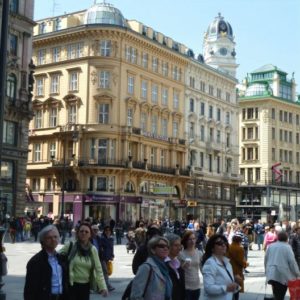
From St. Stephen’s, looking
toward the Graben

Der Graben

Zig Zag sign

An der Graben

Berlitz

Early settlement foundations
(going back to Roman times)

St. Stephen’s Dom, reflection in shop window

St. Stephen’s (side view)

St. Stephen’s (detail)

An Singerstrasse (near St. Stephansdom)

Blutgasse (Blood Lane, looking toward Mozarthaus)

Stadtpark (City Park) in the Spring
On our second day in Vienna, we walked the 20 minutes from our lodging to to The Belvedere, originally built as a Summer Palace & gardens for Prince Eugene of Savoy in the early 1700’s, but now serving as a museum with principal works by Gustav Klimt and others at the Upper Belvedere (the main palace).
There was also a temporary but comprehensive exhibit of Egon Schiele’s work at the Lower Belvedere–what a great chance to see works by two of Vienna’s best-known artists (contemporaries in the early 20th century), two of my favorites–very nice!

The Belvedere
(former palace –now an art gallery)

The Belvedere (with tulips)

Lower Belvedere (& formal garden)
On the third day, we decided to take the short walk from our hotel on Johannesgasse to the Ringstrasse and, from there, stroll clockwise around a portion of the Ringstrasse that is home to a goodly number of Vienna’s monumental buildings. We saw the Staatsoper (opera house), then walked through the Burggarten, past the Palmenhaus, then past the Art History and Natural History Museums. We then took a very slight detour to eat at the rooftop cafeteria at the Justizpalast (Palace of Justice).
The food was decent, reasonably priced Austrian fare, and we had a view over the rooftop of Parliament to the Rathaus (city hall) beyond. Afterwards we walked past the Parliament (where there was a small demonstration in favor of ethical eating going on) and on to the gothic Rathaus. After this we backtracked counterclockwise around the Ringstrasse toward our hotel, but detoured 3 or 4 blocks to the south to see the beautifully baroque Karlskirche (Church of St. Charles Borromeo).

Near the Albertina Gallery

Burggarten

Palmenhaus at the Burggarten
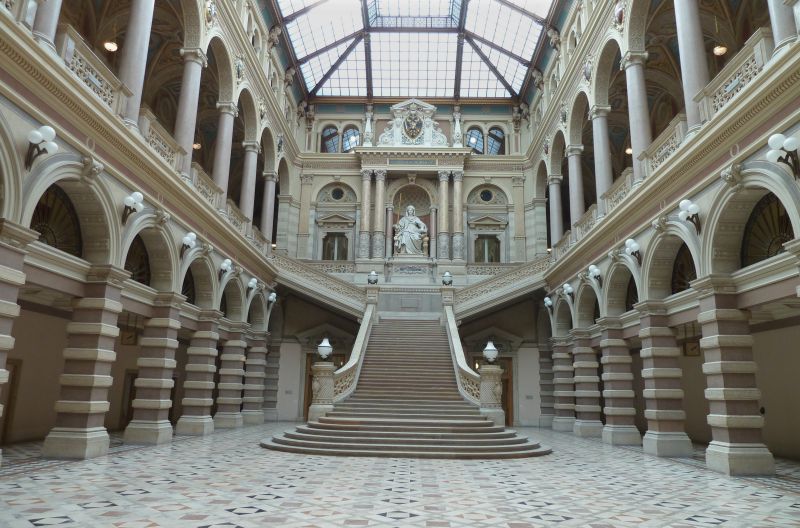
Justizpalast ( Palace of Justice ) interior — atrium

Sculptural detail, outside Parliament

Rathaus (City Hall) side view detail

Rathaus, detail

Karlskirche (St. Charles Church)/strong>

Karlskirche (front detail with column)
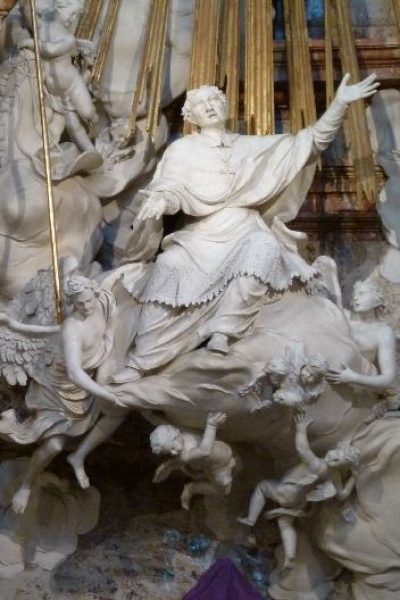
Karlskirche altar, detail

Karlskirche, interior detail

Schonbrun palace (on end)
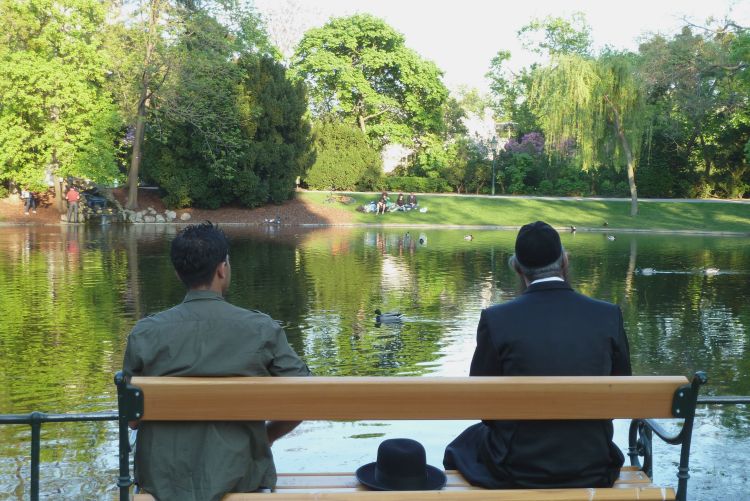
Stadt Park
Home Page